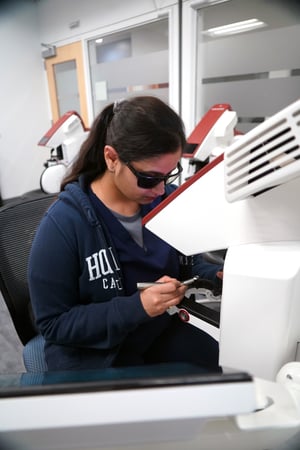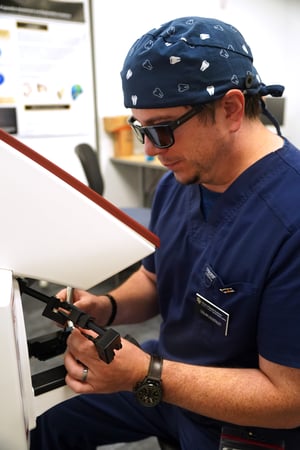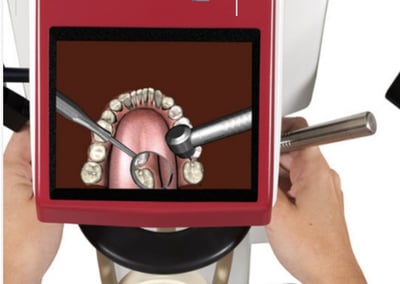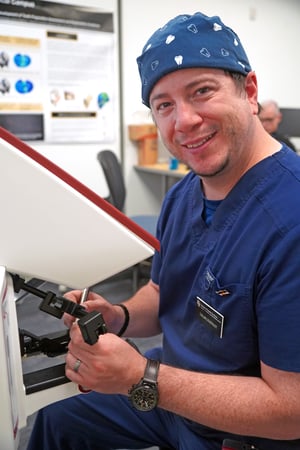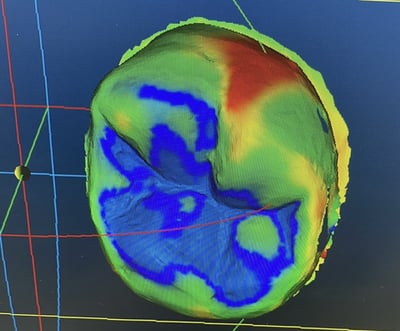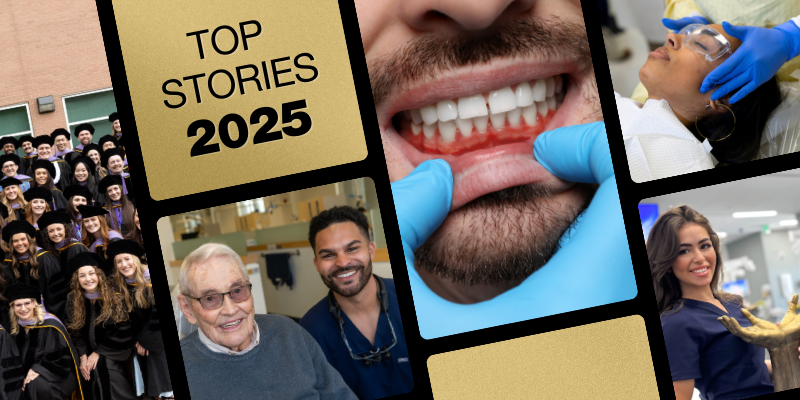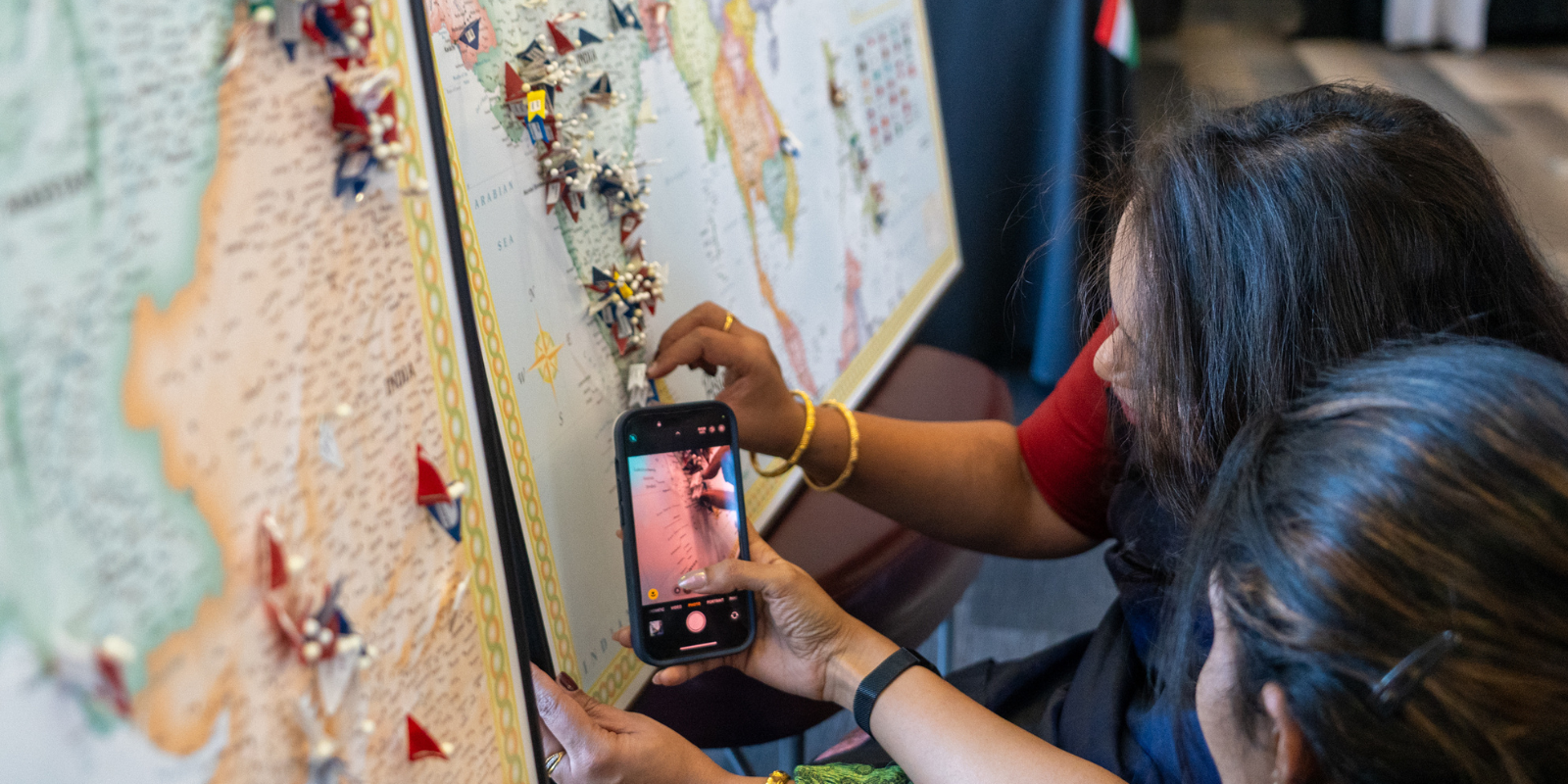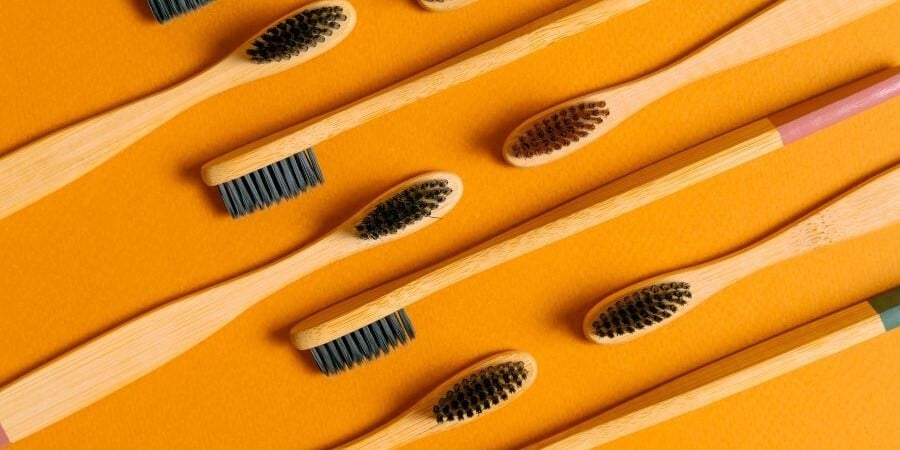Students at the University of Colorado School of Dental Medicine (CU SDM) are immersed in a collaborative environment where faculty, staff and peers are incredibly supportive, and everyone wants to see you succeed... but a little competition never hurt anyone.
The Golden Hands Haptics Competition was a collective idea by Michael Lampe, EdD, program director of digital education and academic technology; Thomas Greany, DDS ’97, associate professor and director of academic technology initiatives; and Eric Mediavilla, DDS ’00, associate dean of student affairs and admissions and associate professor.
“With faculty who are eager to explore academic innovations and students calling for new dental simulation exercises,” said Lampe, “I wanted to reintroduce the technology we have available in a fun community-building approach.” He thought to himself, “If quidditch can become a major league sport, I’m sure we can make an interesting competition out of the Haptics Lab.”
|
CU SDM students Suramya Sharma, MDS, BDS, (ISP ’23), and Collin Loustalet (DDS ’24) competed against each other in the final round of the inaugural Golden Hands Haptics Competition. |
The science of sensation: What is haptics?
Haptics technology is commonly found in smartphones and wearable devices, particularly in the form of vibration feedback. When your phone vibrates to alert you to an incoming text message or when you hit your step goal for the day and your fitness tracker vibrates – that's haptics.
In the context of dental education, haptics technology allows dental students to practice their skills using a specialized machine that replicates the sensation of working on a real patient. Students hold real instruments and look through a screen that shows a simulated mouth. By imitating the feeling of touch, pressure and resistance, haptics technology provides a realistic and immersive experience for students, enhancing their training and improving their proficiency in dental procedures before working with real patients.
|
A digitized image of the haptics machine shows what a student might see as they practice. |
“When we first introduced haptics technology as part of the Introduction to Dentistry course, we closely monitored students' progress as they repeated simulation exercises,” said Greany. “We observed significant improvements in their abilities, marked by enhanced speed and efficiency."
Greany assisted in creating exercises for the students to complete when competing head-to-head in a single-elimination format.
Bracket style showdown: a closer look into the competition
A total of 18 students registered to participate in the inaugural Golden Hands Haptics Competition: eleven from the Doctor of Dental Surgery (DDS) program and seven from the Advanced Standing International Student Program (ISP). Four students were in their first year, two in their second year, six in their third year and six in their fourth year. A random drawing set the bracket – rankings had no bearing on one’s skill – except for the play-in round where the last four registrants competed for the 15th and 16th spots.
%20no%20scores.png?width=1000&height=490&name=2023%20Golden%20Hands%20Haptics%20Lab%20Competition%20Bracket%20(Complete)%20no%20scores.png)
Given the variety of cohort years and programs, participants were allowed to complete each exercise in their own time.
Each exercise challenged students to remove a prescribed volume of material from three-dimensional shapes, similar to the task of removing decay from teeth. The simulator tracked the amount of material removed as well as the amount of time the students spent drilling. It also deducted points each time they cut outside of the prescribed boundaries of the shapes.
Completed exercises received an efficiency score based on total material removed versus drill time.
The final four competitors were two DDS students and two ISP students: Danny Huynh, DDS ’23, versus Collin Loustalet (DDS ’24) and Andrea Suresh Rajkumar Aruldoss, MPH, BDS, (ISP ’23), versus Suramya Sharma, MDS, BDS, (ISP ’23).
For the final head-to-head competition, Loustalet and Sharma were challenged to a duplicate from wax an anatomically correct physical model of a human molar tooth. Their wax-ups were digitally scanned and precisely compared to the reference tooth using a computerized measurement algorithm.
And the winner is...
Congratulations to Collin Loustalet (DDS ’24), the inaugural CU SDM Golden Hands Haptics Competition champion!
|
Collin Loustalet (DDS '24) |
In an email to the final two participants, Lampe announced, “While there has to be a winner, both of you did very well over the course of the competition and the wax-ups. Be proud of your skills and accomplishments!”
Loustalet’s wax-up was 85% within the stated guidelines of +\- 0.34mm, “in addition to having a very nice finish and polish,” said Greany. "I was impressed with how well the final contestants did. The results were outstanding.” In the grade scan image of Loustalet’s final wax-up, green shows where it was exactly aligned with the reference tooth; blue shows where it was under-sized and red shows where it was too large.
|
A grade scan image of Loustalet's final wax-up shows how closely it was aligned with the reference tooth. |
After asking all participants to fill out a feedback form to reflect on this experience, they overwhelmingly agreed the competition was fun. They also felt that the competition helped them focus on their manual dexterity skills and that it was a good method for reflective learning.
One participant commented, “The haptics units are quite useful in practicing hand skills in a low-stakes environment. [The competition] has been great fun and I look forward to it next year.”

